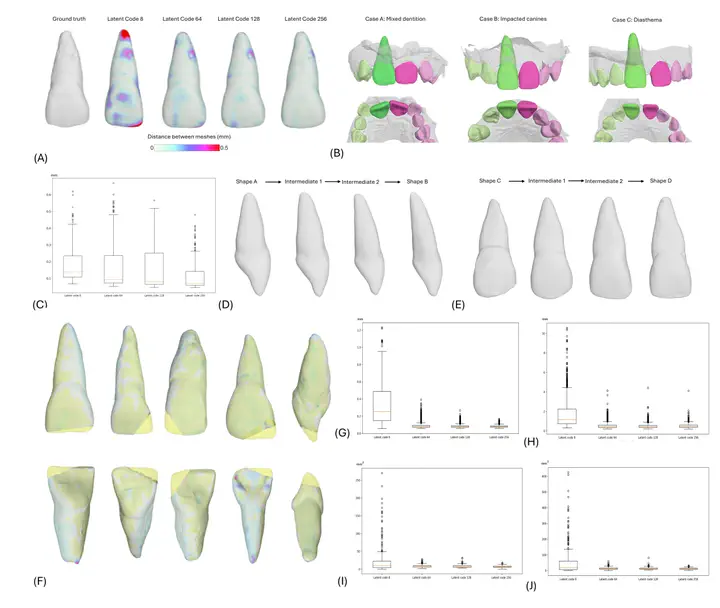
Abstract
More than 1 billion individuals worldwide have experienced dental trauma, particularly children aged 7 to 12 y, predominantly affecting the anterior teeth, which has a significant impact on oral health and esthetics. Rapid emergency restorations using composite resin are followed by medium-term lab-fabricated mock-ups. Recent advancements in artificial intelligence (AI) assist dental restorations, and the objective of this study was to compare the performances of different AI approaches for the learning and reconstruction of central incisors. The study was approved by ethical committees and followed AI in dentistry recommendations. STL files of mature permanent maxillary incisors without severe wear were collected from 3 universities. Principal component analysis (PCA) and Deep Learning of Signed Distance Functions (DeepSDF) models were trained using these files. The learning of PCA and DeepSDF approaches were 3-fold cross-validated, and their performances were assessed using the following metrics to measure the reconstruction accuracy: the difference of surfaces, volumes, lengths, average Euclidian distance, Hausdorff distance, and crown–root angulations. Explainability was assessed using feature contribution analysis for PCA and Stochastic Neighbor Embedding (t-SNE) for DeepSDF. DeepSDF showed significantly better precision in surface, volume, and Hausdorff distance metrics compared with PCA. For reconstructions, the lower size of the latent code of the DeepSDF model demonstrated lower performances compared with higher sizes. In addition, DeepSDF raised concerns about explainability. This study demonstrates the potential of PCA and DeepSDF approaches, particularly DeepSDF, for the learning and reconstruction of the anatomy of upper central incisors. To foster trust and acceptance, future research should, however, focus on improving the explainability of DeepSDF models and considering a broader range of factors that influence smile design. These high performances suggest potential clinical applications, such as assisting practitioners in future smile designs and oral rehabilitation using AI approaches.